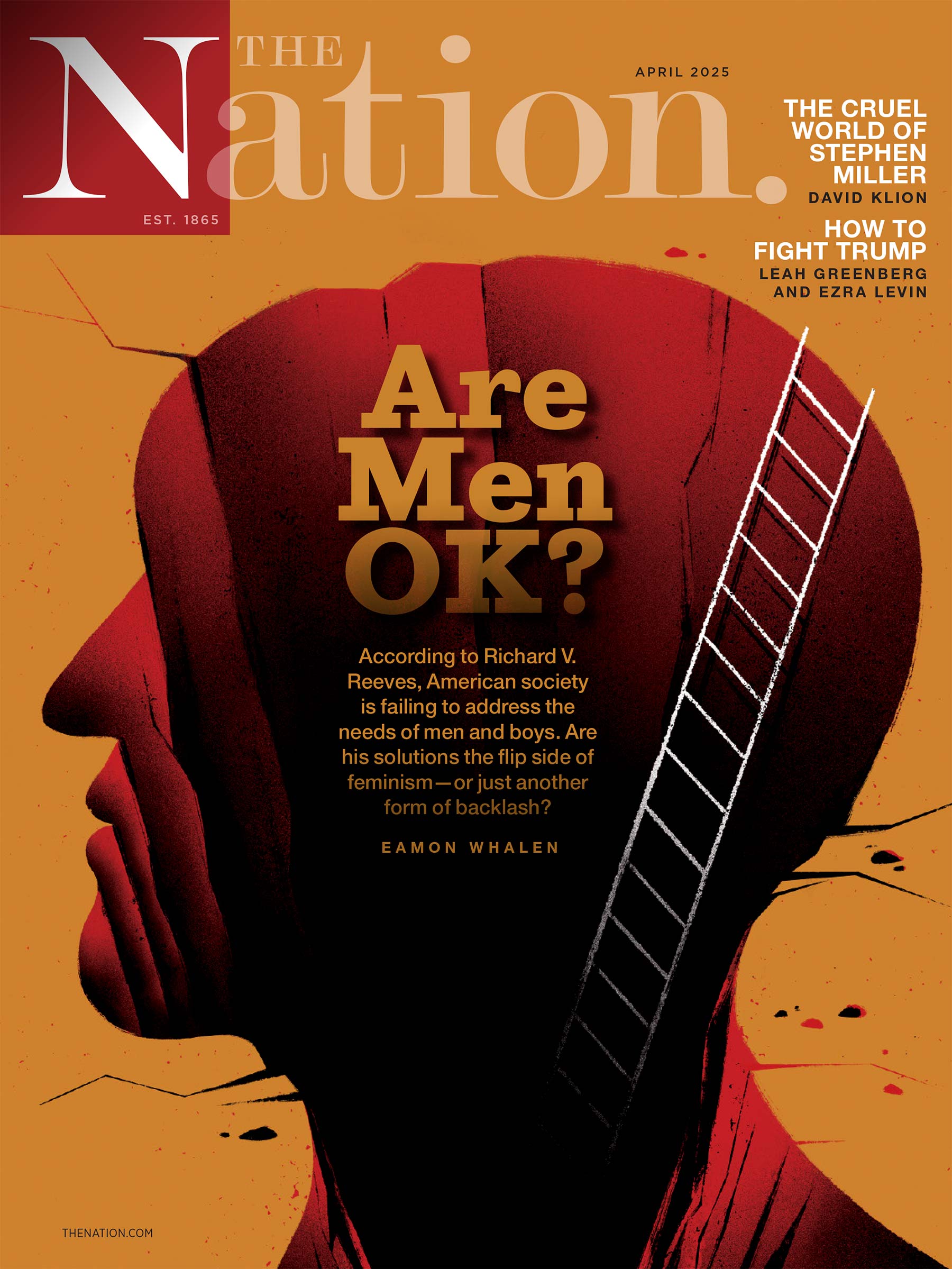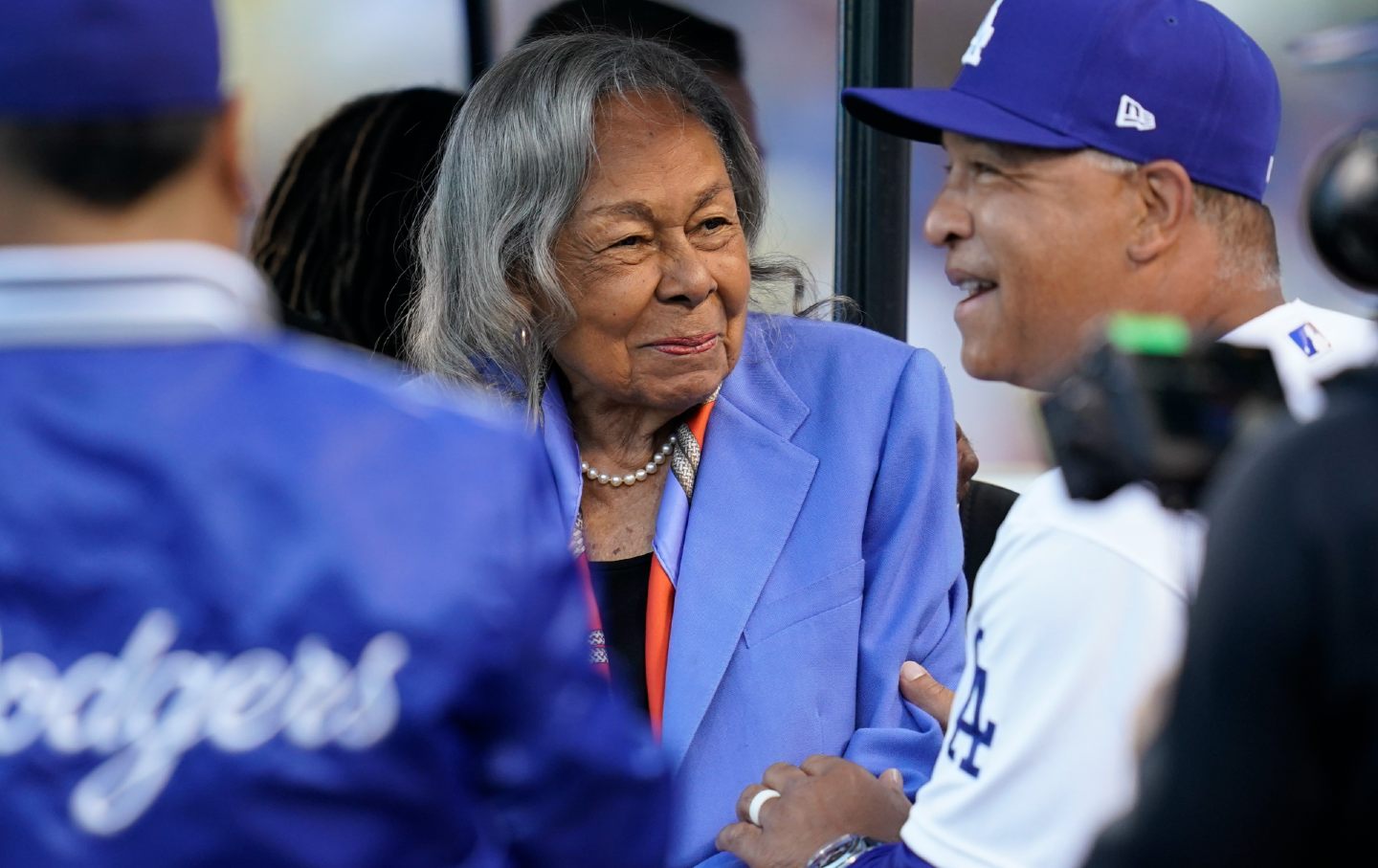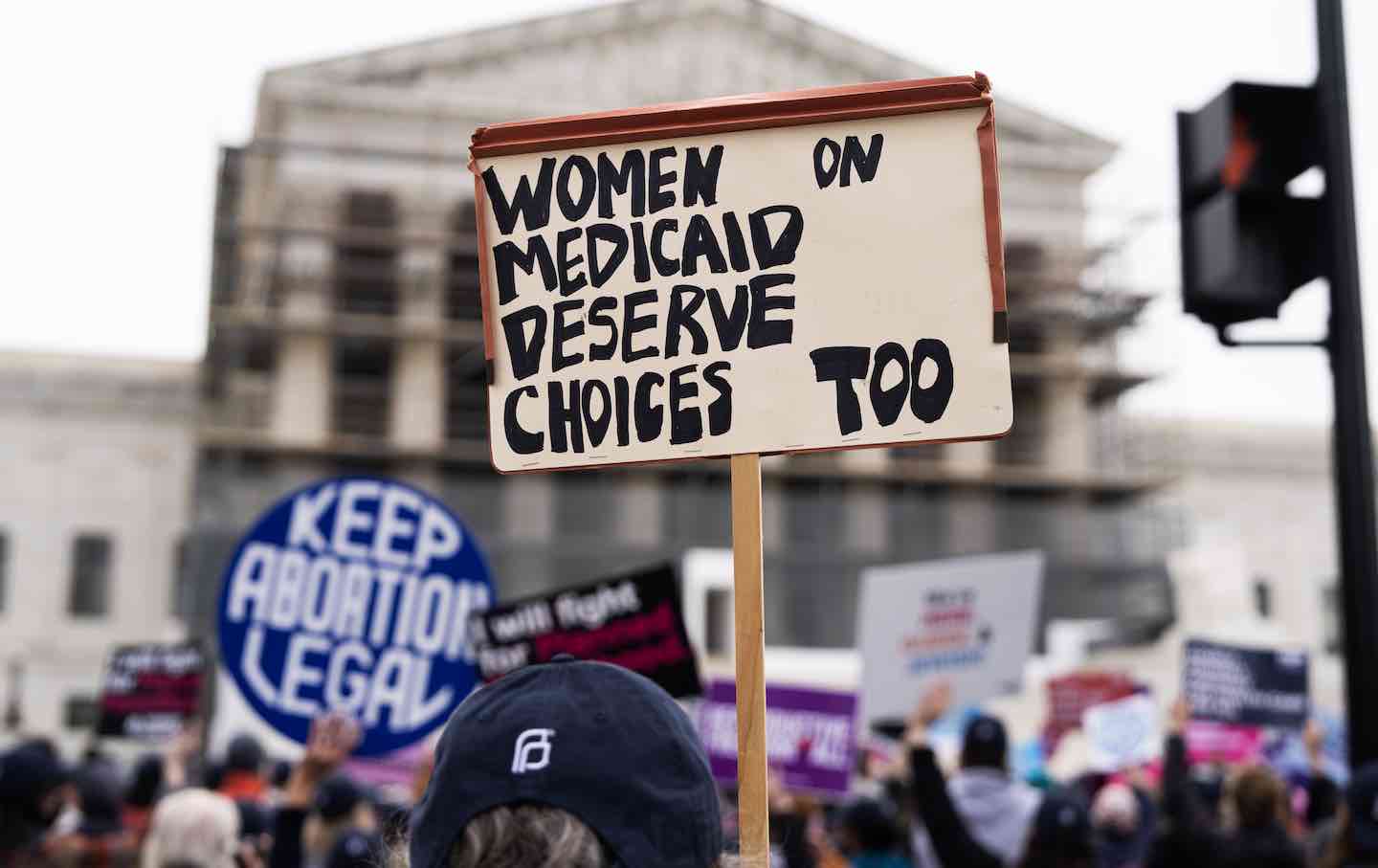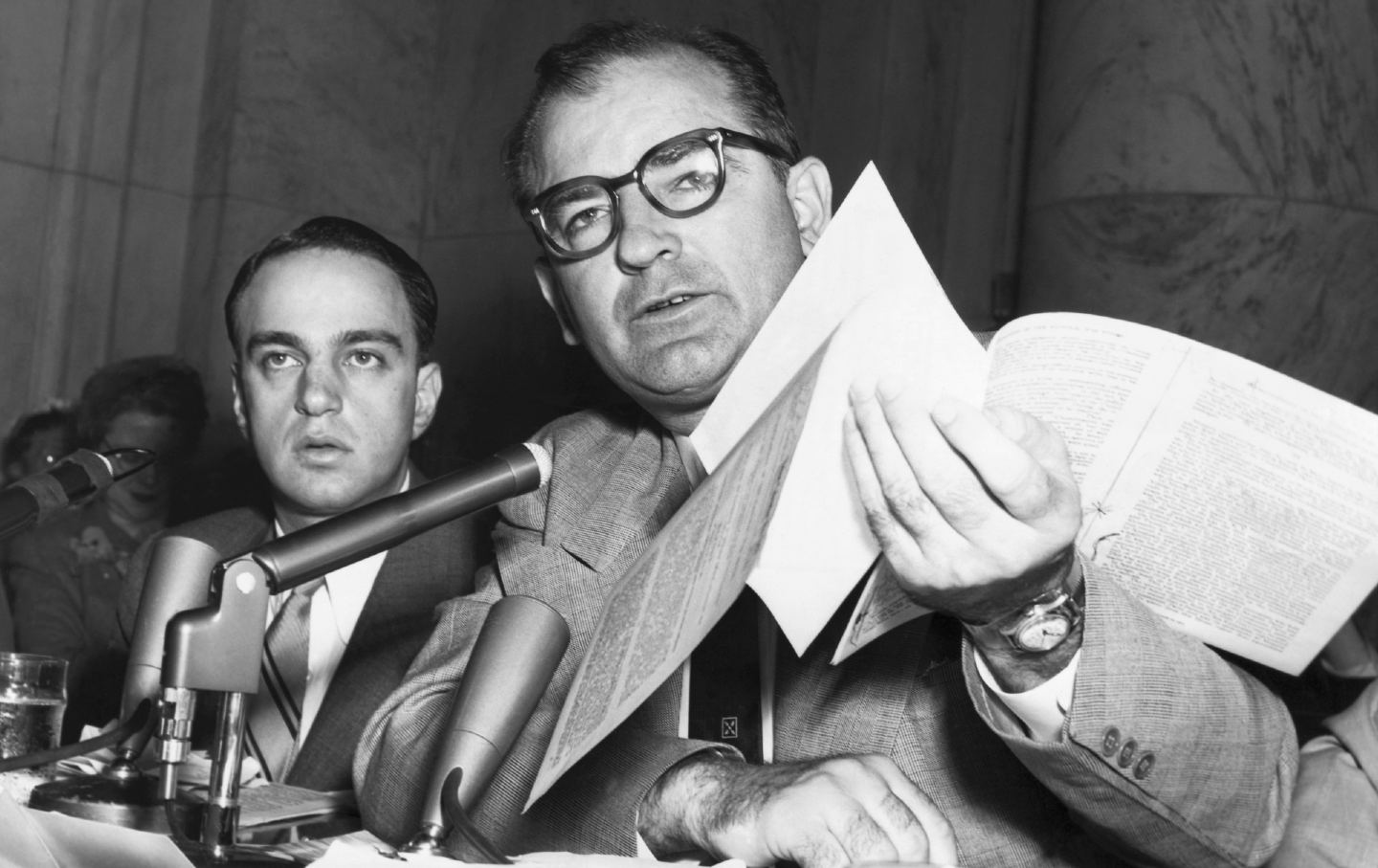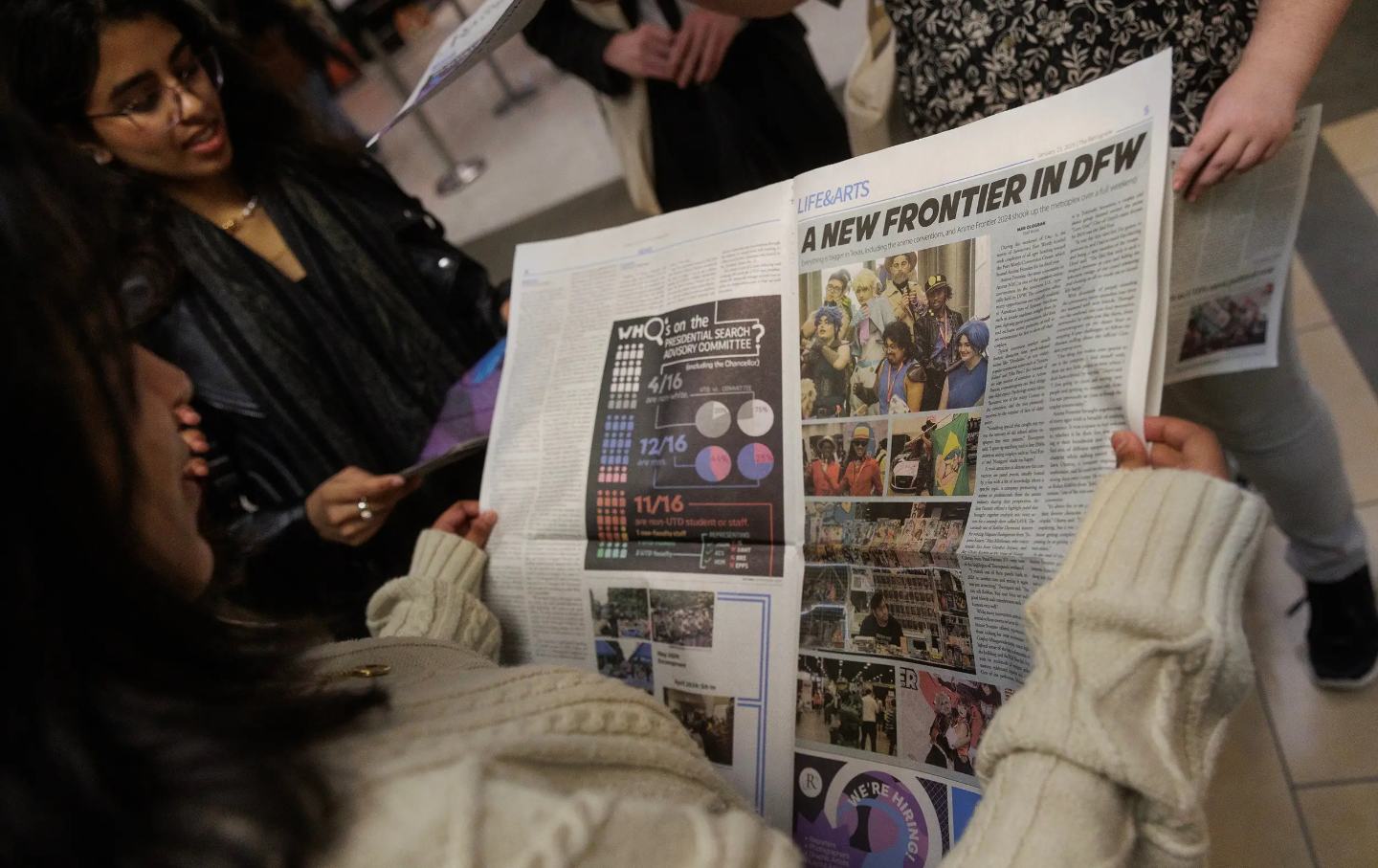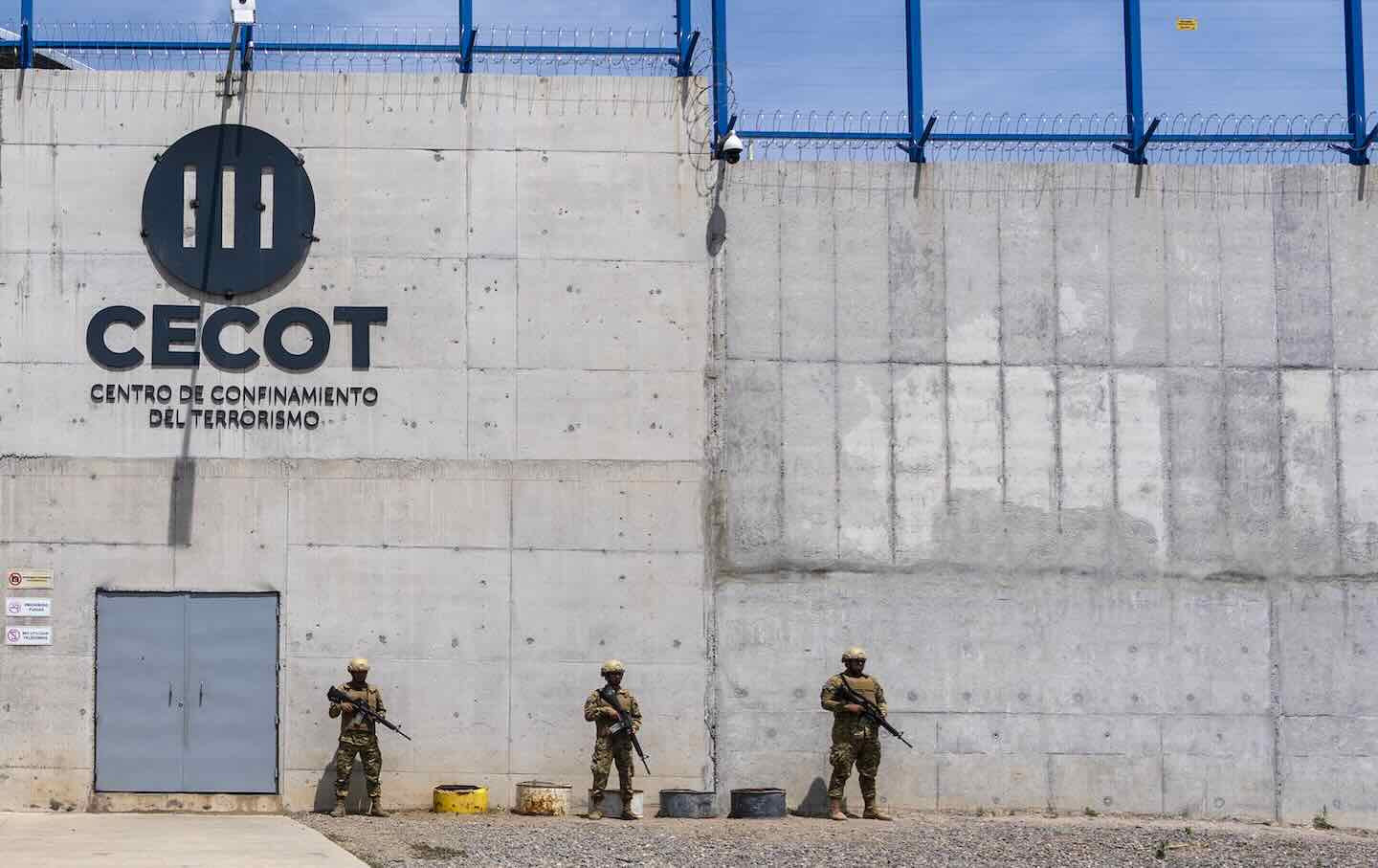The Unemployment System Is Failing Workers. Barney Oursler’s Here to Help.
Oursler and his staff at the Mon Valley Unemployment Committee have shown over the past 40 years what it means to really care about workers—on the job and off.
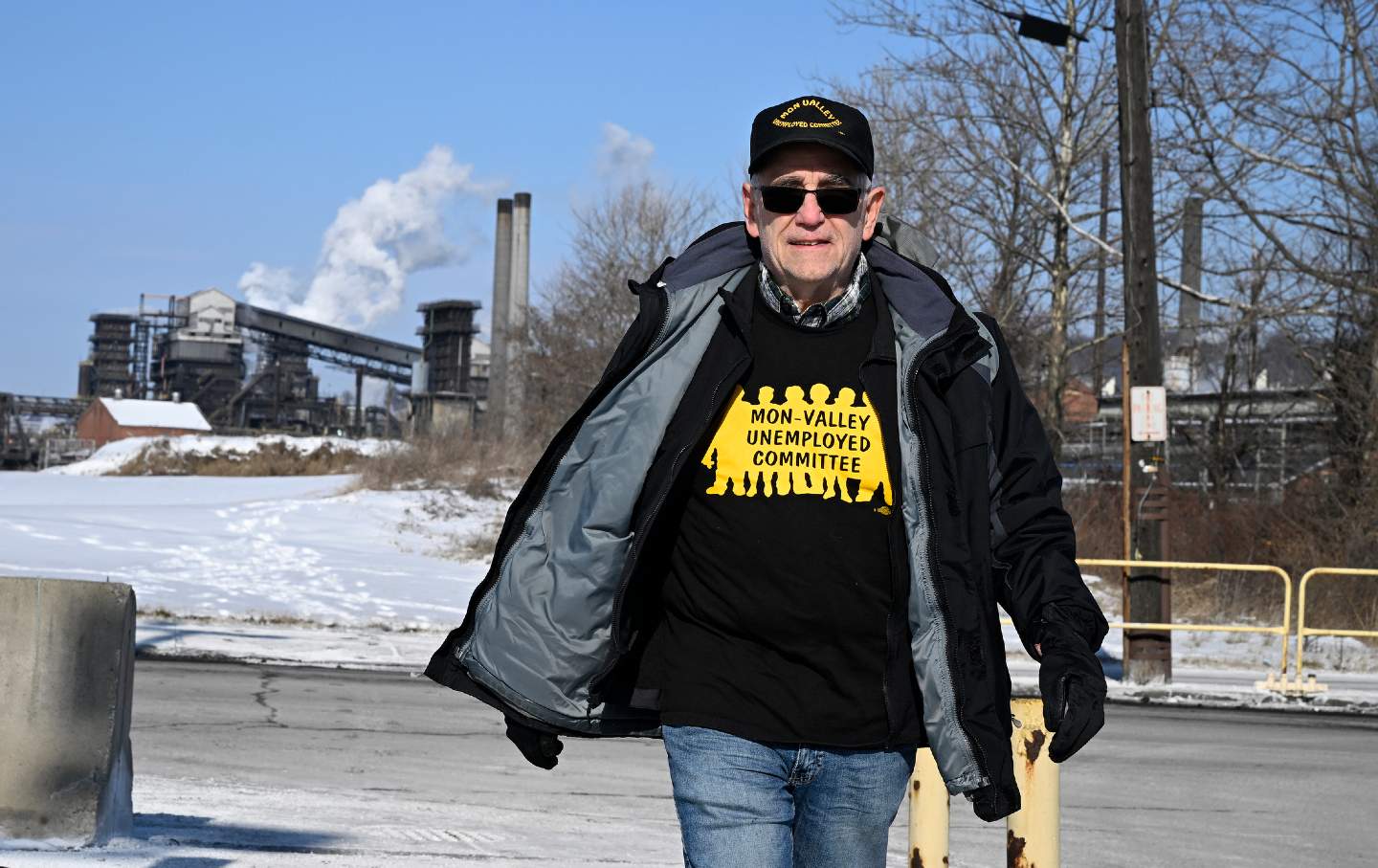
As Barney Oursler drives past the steelworks along Pittsburgh’s Monongahela River, he feels a wave of a familiar emotion—sadness. “I worked in one of those,” he says. “I met people over the 1970s and 1980s whose lives depended on those workplaces and who assumed that that was going to be their life.”
Oursler, who is leading me on a tour of the area’s mills, cofounded and directs the Mon Valley Unemployed Committee, a nonprofit originally established to help the people whose lives were upended by the shuttered factories and abandoned warehouses we’ve been passing in the car. Since 1983, the nonprofit has helped people across Pittsburgh and Pennsylvania navigate the unemployment system; in the process, Oursler and his staff have witnessed firsthand the region’s shifting economic landscape.
Like other parts of the Rust Belt, in the late 1970s and the 1980s the Pittsburgh area experienced the devastating effects of the worldwide steel crisis, losing 133,000 manufacturing jobs between 1979 and 1987. In 1983, the situation was particularly dire: The unemployment rate in the metropolitan area climbed to 17.1 percent, with some counties surpassing 20 percent. One county, at 27.1 percent, exceeded the country’s highest unemployment rate during the Great Depression.
Oursler slows down near the former location of Homestead Steel Works, once one of the largest steel mills in the country. Not only was it the site of the famous and bloody 1892 Homestead Strike, Oursler tells me, it was also a locus of organizing during the economic downturn. In the early 1980s, Local 1397 fought against the United Steelworkers’ international leadership for making concessions to steel companies, led by a radically democratic Rank and File Caucus.
At the time, Oursler was working at Irvin Works, a steel processing plant in West Mifflin, Pennsylvania. Oursler, 75, grew up in Cortland, New York; his father was a welder, and his mother was a schoolteacher. He became involved in the labor movement as a graduate student at the University of Buffalo in the early 1970s, but left to organize factory workers instead. “We were getting shit wages,” he says. “I had discovered exploitation.” For three years, he tried to organize a graduate students union, he said, “but I was spending too much of the time trying to convince workers that they were workers.”
Young progressives, looking for their next fight once the Vietnam War ended and the civil rights movement died down, were turning their attention to the working class. Oursler joined a group of such young workers in the Mon Valley. This cohort fought to expand equal access to millwork for women and Black workers, but frequent layoffs repeatedly disrupted their efforts. “We discovered we were more unemployed than employed,” Oursler says.
As layoffs stretched beyond the duration of unemployment benefits, Oursler and his coworkers found themselves without support. At first, they worked to remedy this through the unions themselves, forming the Unemployed Committee within the United Steelworkers. “Each of the big locals in the [Mon] Valley created an unemployed organization,” Oursler explains. “It was really threatening to the powers that be in the union because [the unemployed committee] wasn’t an established group, but when their members were laid off long enough that all their benefits were running out, they realized they had to respond to the demands of unemployed members to get help.”
When it became clear in 1983 that what had seemed like seasonal furloughs were actually permanent layoffs, the committee broke off into an independent organization, but maintained ties with unions and local organizations. “We always met at union halls. We always involved churches for our food bank or our hotline operations,” Oursler says. “We couldn’t get anywhere without…the support of the two most important institutions in most folks’ lives, which were their workplace, or their union in their workplace, and where they congregated on Sundays.”
At first, the Unemployed Committee addressed the immediate needs of laid-off workers, setting up a hotline to help them secure government assistance and launching a food bank. But as the region’s economic situation became more dire, and the effects of mill closures permeated every aspect of life, the committee expanded its scope, starting with helping people keep their homes.
Many people, Oursler and his staff learned, were unable to make their mortgage payments with their unemployment benefits. Each month, the committee tracked down homeowners at risk of losing their homes to sheriff’s sales—court-ordered auctions following foreclosures. “We started contacting people and saying, ‘Hey, we don’t accept that you’re gonna lose your home,’” Oursler says. The committee stormed the sales, chanting slogans, holding simultaneous press conferences, and surrounding the lawyers buying up the homes with large paper vultures meant to symbolize predatory lenders. Their efforts brought national media attention; sheriffs began withdrawing houses from the sale lists. “For seven months, we stopped sheriff sales,” Oursler says.
The campaign to stop foreclosures attracted politicians in Harrisburg, who joined with the committee to create the Homeowners’ Emergency Mortgage Assistance Program (HEMAP), a loan program to protect Pennsylvanians who are financially unable to make their mortgage payments. “It still exists,” Oursler says. “Some Republican governors have tried to get rid of it, but we’ve managed to save it. It’s the only law in the country—at any state or federal level—that protects unemployed people’s homes from foreclosure.” By 2011, it was estimated that HEMAP had saved more than 40,000 families from foreclosure.
We follow a steady stream of traffic on Duquesne Boulevard, riding along the frozen Monongahela River. “That’s the Edgar Thomson Works over there,” Oursler says, gesturing toward the behemoth across the river in Braddock. The mill, the first in the United States to use the Bessemer steel process, which enabled the inexpensive mass production of steel, has been active since 1875 and remains the backbone of U.S. Steel’s Mon Valley operations. It’s also one of the company’s last fully integrated steelmaking sites. Once part of an industrial empire that employed hundreds of thousands, the company now faces an uncertain future. After President Biden blocked its proposed $14.9 billion sale to Japan’s Nippon Steel, U.S. Steel signaled that it may shift jobs, mills, and even its headquarters out of Pittsburgh. Without significant investment, its future, like that of the surrounding communities, remains precarious.
Popular
“swipe left below to view more authors”Swipe →But as Oursler points out, this precarious situation is rooted in a longer history. “Disinvestment in the steel industry happened decades ago, long before the collapse,” he says. “While other operations around the world and in different parts of the country were investing in newer steelmaking technologies, these mills kept running with only piecemeal updates.”
The Steelworkers’ traditional stance—fighting for fair wages and benefits while leaving investment decisions to management—began to shift in the 1980s. “We worked hard to push the union’s leadership,” Oursler explains. “They began to realize—not just understand, but actively accept—that their role needed to evolve. In places like Steubenville [Ohio] for example, they helped workers gain ownership of their mills through employee stock ownership plans.”
Closer to home, that new mindset led the union to fight for the installation of a continuous caster machine at Edgar Thomson, which prevented the mill from becoming obsolete. By 1992, the union succeeded. “It was a major upgrade,” Oursler says. “Negotiating for it took multiple contract fights, but the union accepted that fewer jobs were better than no jobs.”
By the mid-1980s, the rest of the country had begun to recover from the recession, but Pittsburghers were still struggling. “You still couldn’t get a job at McDonald’s,” Oursler says. In 1985, the committee began to retrain workers, an effort that relied on the federal Trade Adjustment Assistance program, which offers job training, income support, relocation assistance, and subsidies for health insurance to help displaced workers transition to new employment. When President Reagan reduced spending and tightened eligibility criteria for the program, the committee fought back. “Reagan’s people decided it was too expensive, so they cut access,” Oursler says. “We organized tens of thousands of people. The Steelworkers gave us mailing lists of every closed mill. We sent 5,000 to 10,000 postcards to workers saying, ‘If you need help remaking your life, come to this meeting.’” Thousands showed up; the committee had buses ready to take people to Harrisburg and Washington that night.
By 1987, the committee had successfully pushed the governor to retroactively disburse benefits, allowing former steelworkers to transition into jobs in burgeoning areas of the local economy. “Many former steelworkers retrained as aviation mechanics at Pittsburgh Institute of Aeronautics or became nurses,” he says. “Our goal was to build a sustainable economy—help workers regain their quality of life, not just survive.” Still, the remaining workforce was far less unionized, and new service- and tech-oriented jobs presented distinct new challenges. By the time the 2008 financial crisis hit, the committee found itself grappling with a changed reality.
“It was a different population,” Oursler says. “These weren’t union workers with a sense of collective rights and a built-in way to reach them. We kept raising issues and running our hotline, helping people one-on-one. But even when we saw clear systematic problems, we couldn’t mobilize enough people to make politicians afraid. We could find someone willing to do a press conference, but we couldn’t find 50 or 100 people to build a movement.”
It took the Covid-19 pandemic to bring the committee back to the fore. In 2020, Pennsylvania’s unemployment rate peaked at 16.1 percent; 1.2 million Pennsylvanians were on unemployment insurance. The state’s outdated unemployment system could not handle the increased demand. Hundreds of thousands of people were waiting months for their benefits. “That gave us an opportunity,” Oursler says. “Suddenly, we had tens of thousands of unemployed people and an opportunity to organize them.” The committee revived its previous organizing and advocacy tactics, rallying outside the governor’s office in Pittsburgh, commandeering committee hearings, and pressing state leaders in private negotiations.
Oursler turns the car into the parking lot of our final destination, Clairton Works, one of the largest coking plants in the country. Clairton Works comprises one facility in the four-site U.S. Steel operation in the Monongahela Valley. “Those big pipes carry gas from coke production to heat the furnaces at Irvin Works and Edgar Thomson,” Oursler says. “That’s part of why these three mills have to be operating for it to be possible to make steel in the Valley anymore. These mills rely on each other.”
While Clairton Works remains a cornerstone of the Mon Valley’s steel industry, it is also a significant source of air pollution. Last year, U.S. Steel agreed to a $42 million settlement in a Clean Air Act citizen lawsuit over a 2018 fire that disabled the facility’s pollution controls. The terms of the agreement—including investments in pollution control upgrades and the shutdown of pollutant-emitting batteries—reflect ongoing pressure to reduce emissions in a more environmentally conscious era.
Increasingly, the most ambitious proposals call for fully decarbonizing US steelmaking, and these ideas are gaining traction in domestic policy debates. Yet, for corporate executives, transitioning aging plants may be less financially attractive than building new facilities elsewhere. While Clairton struggles with fires and explosions linked to deteriorating infrastructure, U.S. Steel has opened a new “fossil-free” plant in Arkansas, a state known for its hostility to unions.
As we settle into lunch at the McDonald’s across from Kennywood Park, Oursler reflects on the peculiar way time and fate that set him on the path of his unconventional career as an advocate for the unemployed. “It was about the opportunity. I wanted to be a leader in the Steelworkers,” and he did hold union leadership positions in between the early layoffs. “The idea was to return to work, build a rank-and-file movement, and ultimately get elected as leaders and decision-makers within the union.”
“But what really fueled me was seeing people who not only understood that they had to fight but were willing to do it. That was worth everything—even going back on unemployment for 26 years. My wife, understandably, wasn’t entirely thrilled about that decision. But she knew it was what I needed to give my life meaning, and she made that sacrifice.”
Despite the committee’s efforts to improve the lives of unemployed Pennsylvanians, the system remains broken and outdated, a relic of the New Deal era, ill-equipped to serve workers in a modern economy where unemployment is more frequent. It excludes gig and freelance workers, as well as those who leave jobs to care for newborns or sick family members, leaving many without a safety net.
Oursler has seen the toll of job loss on thousands of workers over the years. “Surviving unemployment is hard. Across the country, the maximum unemployment benefit is set at half of what you were making when you worked, so by definition, it makes your life hard,” he says. “Most people don’t have enough savings to absorb that kind of hit. How do you pay your bills? How do you even consider going to school full-time without losing your home or car?”
If the unemployment system is failing workers, what would it take to build something better? Imagining a reformed unemployment insurance system sparks a broader conversation about the future of work and the end of capitalism. Expanding the safety net—with a jobs guarantee, universal healthcare, paid family leave, and housing assistance—would not only cushion the experience of unemployment but also address the varied reasons people leave or lose their jobs in the first place.
Oursler sees this as part of a larger fight. “There was a movement in the ’80s about the ‘end of work,’ pushing for a 30-hour workweek with full-time pay. But all the gains in productivity have gone to billionaires,” he says, “Until working people collectively fight for their share, we won’t win. That’s the fight ahead.”
